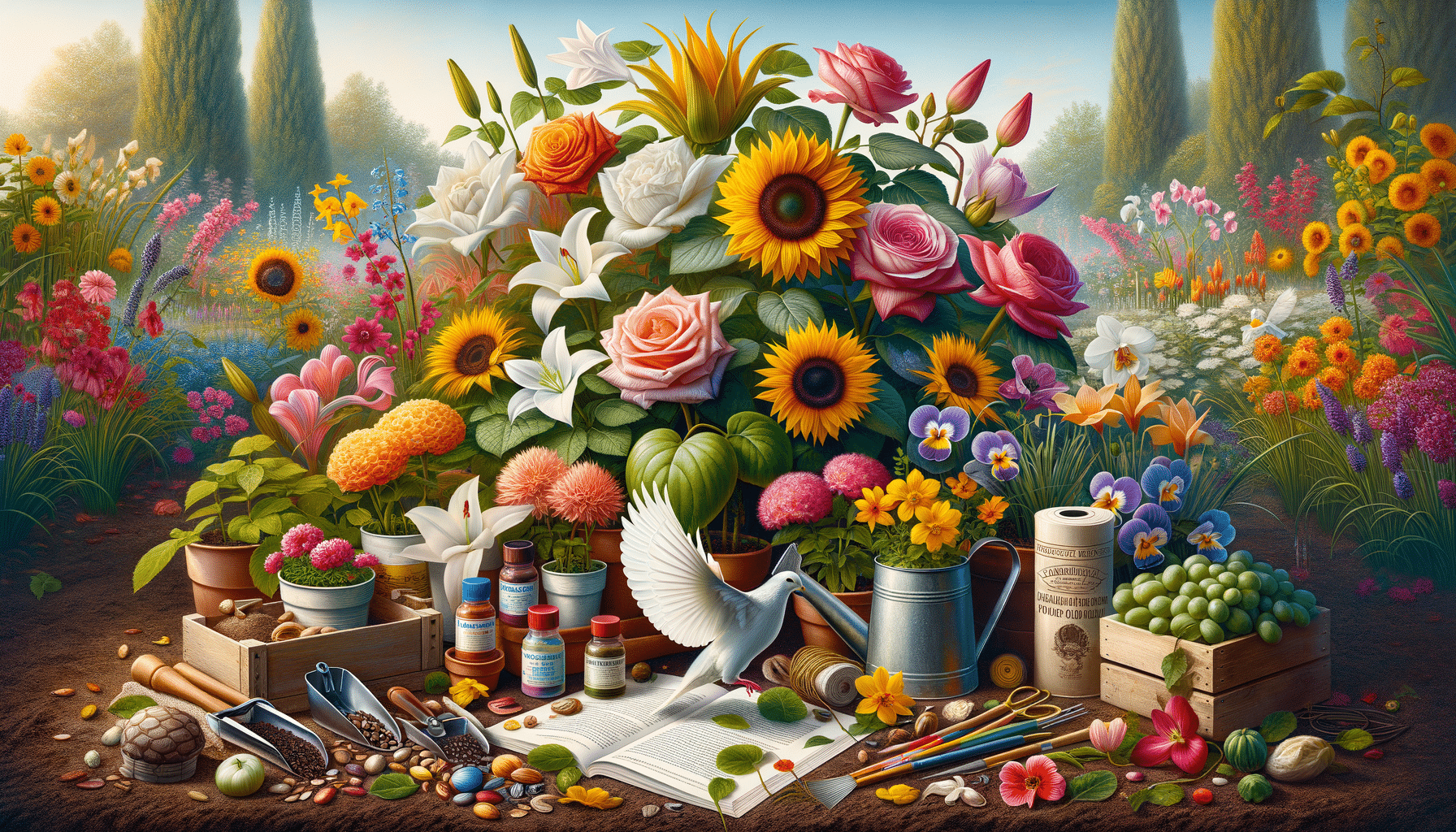
A Comprehensive Guide to Flowers: Beauty, Symbolism, and Cultivation
The Beauty and Diversity of Flowers
Flowers are among nature’s most exquisite creations, offering a spectrum of colors, shapes, and fragrances. This diversity not only enhances our gardens and homes but also plays a crucial role in ecosystems. Flowers attract pollinators like bees and butterflies, facilitating plant reproduction and maintaining biodiversity. The variety of flowers available is staggering, from delicate orchids to vibrant sunflowers, each with unique characteristics that appeal to different tastes and purposes.
Flowers are categorized into several types based on their growth patterns and life cycles. Annuals like marigolds complete their life cycle in one growing season, providing bursts of color. Perennials, such as peonies, return year after year, offering enduring beauty with minimal maintenance. Biennials like foxgloves take two years to complete their life cycle, adding a unique dynamic to garden planning.
The aesthetic appeal of flowers is undeniable, but their impact extends beyond visual beauty. Flowers have been used throughout history to convey emotions and messages, a practice known as floriography. Red roses symbolize love and passion, while white lilies often represent purity and innocence. This language of flowers allows individuals to express sentiments subtly and elegantly.
The Symbolism and Cultural Significance of Flowers
Flowers hold profound meanings across different cultures and traditions. They are integral to ceremonies and rituals, symbolizing various aspects of life and spirituality. In many cultures, flowers are used in weddings, funerals, and religious ceremonies, each type conveying specific sentiments.
In Eastern cultures, the lotus flower is revered for its purity and spiritual awakening. It rises from muddy waters to bloom into a beautiful flower, symbolizing enlightenment and rebirth. Similarly, cherry blossoms in Japan represent the fleeting nature of life, celebrated during the annual hanami festival.
Western cultures also attribute meanings to flowers. The Victorian era popularized the language of flowers, where bouquets conveyed messages that words could not. Daisies symbolized innocence and purity, while chrysanthemums represented friendship and well-wishing.
Understanding the symbolism of flowers can enhance their use in personal and social contexts, allowing for thoughtful and meaningful gestures. Whether choosing flowers for a bouquet or a garden, considering their symbolic meanings can add depth and intention to your selections.
Choosing the Right Flowers for Your Garden
Designing a garden with flowers involves more than selecting based on color preferences. It requires considering factors such as climate, soil type, and sunlight exposure to ensure healthy growth and blooming. Understanding these elements can help you create a thriving garden that complements your environment.
Start by assessing your local climate. Some flowers thrive in specific conditions, like succulents in arid regions or hydrangeas in humid areas. Researching native plants can also provide insight into species that are well-adapted to your area, often requiring less maintenance and resources.
Soil quality is another crucial factor. Conduct a soil test to determine its pH level and nutrient content. Amend your soil accordingly to provide the ideal growing conditions for your chosen flowers. Additionally, consider the sunlight requirements of each plant. Some flowers, like sunflowers, need full sun, while others, like hostas, prefer shade.
By carefully selecting flowers based on these considerations, you can cultivate a garden that not only looks beautiful but also supports local wildlife and ecosystems. A well-planned garden can become a sanctuary for both plants and pollinators, contributing to environmental conservation.
Flower Care and Maintenance Tips
Maintaining a garden full of vibrant flowers requires regular care and attention. Proper watering, fertilization, and pruning are essential practices that can significantly impact the health and longevity of your plants.
Watering is perhaps the most critical aspect of flower care. Most flowers need consistent moisture, but overwatering can lead to root rot. It’s essential to understand the specific watering needs of your plants, adjusting based on seasonal changes and weather conditions. A general rule is to water deeply but less frequently, encouraging roots to grow deeper into the soil.
Fertilization provides the necessary nutrients for flowers to thrive. Organic options like compost or well-rotted manure can improve soil health and provide a balanced nutrient supply. Be cautious with synthetic fertilizers, as overuse can harm plants and the environment.
Pruning helps maintain the shape and health of flowering plants. Removing dead or diseased parts prevents the spread of pests and diseases, while cutting back overgrown areas encourages new growth and blooming. Each flower type has specific pruning requirements, so research is crucial to avoid damaging your plants.
With these care tips, you can enjoy a flourishing garden that rewards you with beauty and tranquility throughout the growing season.
Creative Uses of Flowers Beyond the Garden
Flowers extend their beauty beyond gardens and bouquets, offering creative opportunities in various aspects of life. From culinary uses to arts and crafts, the possibilities are endless.
Edible flowers like nasturtiums and violets can add color and flavor to culinary creations. They are used in salads, desserts, and beverages, providing a unique twist to traditional recipes. It’s essential to ensure that flowers are safe for consumption and free from pesticides before using them in food.
In arts and crafts, flowers serve as inspiration and materials. Pressed flowers can be used to create beautiful artwork, greeting cards, and home decor. Floral arrangements and wreaths bring seasonal charm to living spaces, while flower photography captures their transient beauty for lasting enjoyment.
Flowers also play a role in wellness and aromatherapy. Essential oils derived from flowers like lavender and rose are used for relaxation and stress relief. The soothing scents of flowers can create a calming atmosphere, enhancing mental and emotional well-being.
By exploring these creative uses, you can appreciate flowers in new and innovative ways, enriching your life with their natural beauty and versatility.


